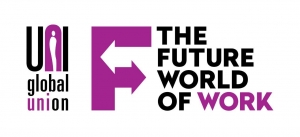Paris climate deal: what is in it ?

After two intense weeks of work at the COP21 climate summit in Le Bourget together with ITUC and 400 union delegates, UNI Global Union and the trade union team make a critical assessment of the Paris agreement.
The Paris agreement marks a major leap for human kind and the result of a compromise among 195 nations.
But what is in the text ? (see the full COP21 decision and Paris agreement text available on the UNFCCC website):
Strengths:
- Universal coverage: the Kyoto Protocol only covered a limited number of countries, for the first time we have a legal agreement that can apply to 196 Parties (195 countries and the EU). It will be open to signature from the 22nd of April 2016 and then open to ratification for entry into force in 2020.
- Long-term goal: the goal is to limit global temperature increase to well beyond 2°C or 1.5°C to protect people and the planet from catastrophic change. There will be a global stock in a coordinated effort to close the gap between policy and science. The goal is also to peak global greenhouse gas emissions as soon as possible.
- Review mechanism every five years: there will be a review mechanism to assess compliance every five years and a global stock take on mitigation, finance and adaptation.
Could do better/ to improve at the next COP:
- Just transition and human rights: these are fundamental elements for the trade union movement and they are included in the Preambule of the Paris agreement, not in the article 2. of the agreement but higher in the list compared to previous versions.
- Short-term action: the current plans submitted by countries would take us to a +3°C pathway and the COP21 decision is calling Parties to review their pledges urgently and at the latest before 2020.
- Short-term finance: echoing the announcements made outside COP21 by business and investors to shift from fossil fuel to renewable energy, governments commit to scale up their financial resources for reducing emissions and helping developing countries to adapt, scaling up from 100 billion dollars a year as a current financial flows are estimated to around 60 to 70 billion dollars a year and developed countries still need to commit more funding to get to the 100 billion dollars a year threshold. The COP21 decision is asking governments to review and scale up their financial commitments using the 100 billion dollars a year as a floor for after 2020.
Weaknesses:
- Balance between emissions and sinks: this definition is ambiguous as it could include Carbon Storage which hasn’t been scientifically and technically tested. Forests are important as carbon sinks as well but countries need to urgently stop deforestation first.
- Lack of sanction in case of non-compliance: the Paris agreement is a facilitative platform and there is a review mechanism but what will be happen in case of non-compliance is not clear.
More information about what happened at COP21 in Paris: elise.buckle@uniglobalunion.org and UNI website on climate: http://www.uni4climate.org

